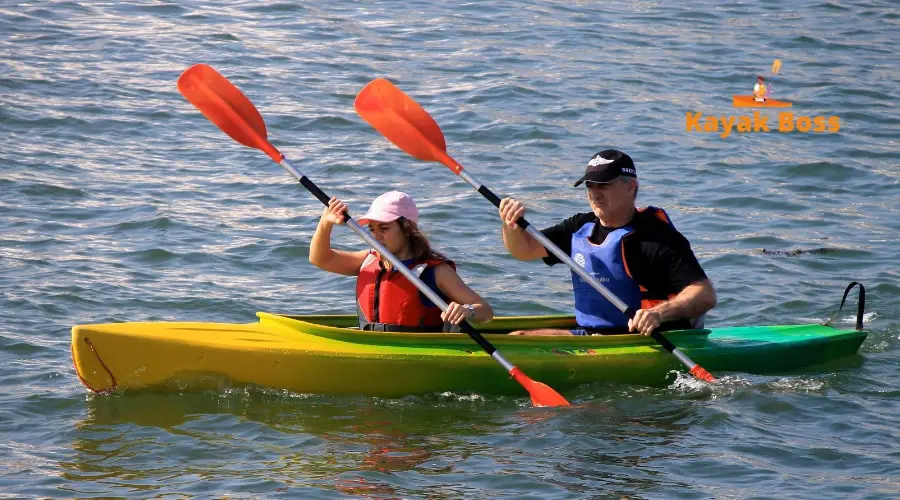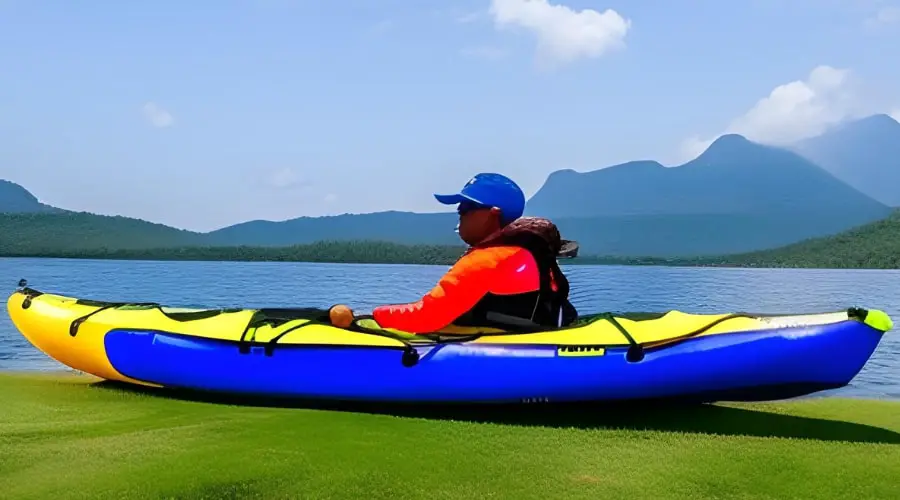Kayaking is a thrilling and exciting water activity that allows you to explore nature’s beauty while getting a good workout. Inflatable kayaks are becoming increasingly popular due to their portability, ease of use, and affordability. However, one question that frequently arises among kayakers is whether inflatable kayaks flip easily or not.
In this article, we will explore the factors that contribute to inflatable kayak stability and answer the question of do inflatable kayaks flip easily.

The Physics of Stability in Kayaks
Before we dive into the factors that affect inflatable kayak stability, it’s essential to understand the physics of kayak stability. Stability in kayaks is determined by two factors: primary stability and secondary stability.
Primary stability is the kayak’s initial stability, which refers to how stable the kayak is when it is flat on the water. Secondary stability is the kayak’s ability to remain stable when it is tilted to one side.
Kayaks with high primary stability are less likely to tip over when they encounter small waves or gusts of wind. However, they tend to be less maneuverable. Kayaks with high secondary stability are more maneuverable but can tip over more easily.
Factors Affecting Inflatable Kayak Stability
Inflatable kayaks, like traditional hard-shell kayaks, have varying degrees of stability. The following factors affect the stability of inflatable kayaks:
Width
The width of the kayak is one of the most crucial factors in determining its stability. Wider kayaks have higher primary stability and are less likely to tip over. Narrower kayaks, on the other hand, have higher secondary stability, making them more maneuverable but more prone to tipping over.
Length
The length of the kayak also affects its stability. Longer kayaks have higher primary stability and are less likely to tip over. However, they are less maneuverable than shorter kayaks.
Shape
The shape of the kayak also plays a significant role in its stability. Kayaks with a flat bottom have higher primary stability and are less likely to tip over. Kayaks with a V-shaped bottom have higher secondary stability and are more maneuverable but can tip over more easily.
Weight
The weight of the kayak, including the paddler and gear, also affects its stability. Kayaks with a higher weight capacity tend to be more stable than those with a lower weight capacity.
Center of Gravity
The center of gravity is the point where the kayak’s weight is balanced. The lower the center of gravity, the more stable the kayak is. Inflatable kayaks tend to have a higher center of gravity than hard-shell kayaks, making them more prone to tipping over.

Inflatable Kayak Safety Tips
While inflatable kayaks can be stable, it’s essential to follow proper safety guidelines to prevent accidents. Here are some safety tips to keep in mind when using an inflatable kayak:
- Always wear a personal flotation device (PFD) when kayaking.
- Check the weather forecast before heading out and avoid kayaking in rough waters.
- Make sure your kayak is properly inflated before getting on the water.
- Do not exceed the weight capacity of your kayak.
- Practice proper paddling techniques to maintain balance and stability.
- Avoid sudden movements or standing up in the kayak, as this can cause it to tip over.
FAQs:
Can inflatable kayaks be used in rough waters?
Inflatable kayaks can be used in rough waters, but it is important to check the weather forecast and only use the kayak in appropriate conditions.
Are inflatable kayaks more prone to flipping than hard-shell kayaks?
Inflatable kayaks can be more prone to flipping than hard-shell kayaks due to their higher center of gravity. However, proper use and following safety guidelines can prevent flipping.
What is the weight capacity of inflatable kayaks?
The weight capacity of inflatable kayaks varies depending on the model and manufacturer. It is important to check the weight capacity before purchasing and not exceed it when using the kayak.
Can inflatable kayaks be repaired if they are punctured?
Inflatable kayaks can be repaired if they are punctured using a repair kit. It is important to carry a repair kit with you when using an inflatable kayak.
How do I properly inflate an inflatable kayak?
To properly inflate an inflatable kayak, follow the manufacturer’s instructions and use a pump designed for inflatable kayaks. Overinflating or underinflating the kayak can affect its stability.
Conclusion
Inflatable kayaks can be stable if the proper precautions are taken. The stability of an inflatable kayak depends on several factors, including width, length, shape, weight, and center of gravity. A wider kayak with a flat bottom and a lower center of gravity will provide more primary stability and be less prone to tipping over. However, narrower kayaks with a V-shaped bottom and higher secondary stability will be more maneuverable but can tip over more easily.
While inflatable kayaks can be prone to flipping if not used properly, following safety guidelines such as wearing a PFD, checking the weather forecast, properly inflating the kayak, not exceeding weight capacity, and practicing proper paddling techniques can help prevent accidents.
Ultimately, the stability of an inflatable kayak depends on how it is used and the conditions it is used in. If used properly and in appropriate conditions, inflatable kayaks can be a safe and enjoyable water activity.
